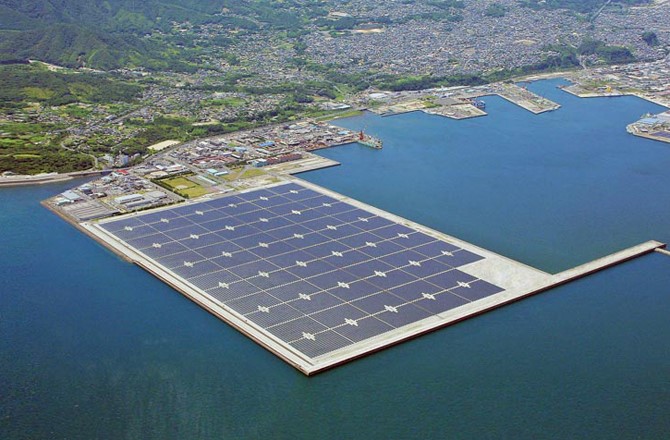
In an effort to capture the vast amount of heat and solar energy gathered by open water, the Japanese Kyocera Corporation and the Century Tokyo Leasing Corporation have teamed up to construct the world’s largest floating solar installation for a second time. The project was announced immediately following the completion of Kagoshima Nanatsujima plant, pictured above, the current contender for the largest floating solar plant in the world.
The new project will consist of approximately 50,000 solar collection modules that cover a surface of 180,000 square meters, floating atop the Yakamura Dam reservoir in a location that does not disrupt maritime routes. Engineers estimate the facility will produce a total of 15,635 megawatts per year, enough energy to power 4,700 homes once it’s up and running within the Chiba Prefecture in Japan.
Kyocera Corp, who is spearheading the project’s construction, maintenance, and tech acquisition, claims that the solar plant will provide enough sustainable, clean energy from the surface of the dam to offset 7,800 tons of annual carbon dioxide emissions.
The structure will also contain an adjacent education center much like its predecessor, which will host classes on environmental issues for local students.
Nobuo Kitamura, senior executive at Kyocera, remains humbled by how far his company has come in the last 40 years since it began researching solar energy, he remarks, “when we first started R&D for solar energy in the mid 1970’s, the technology was only viable for small applications such as street lamps, traffic signs and telecommunication stations in mountainous areas.”
“Since then, we have been working to make solar energy use more ubiquitous in society, and have expanded our business to residential, commercial and utility-scale solar applications. We are excited to work with our partners on this project, taking another step forward by utilizing untapped bodies of water as solar power generation sites.”
Kyocera forecasts a project completion date of March 2016. Construction and installation time will shortened by the fact that no excavation needs to be performed to build a foundation; the floating structure will use conventional frame solar panels and inverters.
Source: inhabitat via Kyocera
Advertisement
Learn more about Electronic Products Magazine





